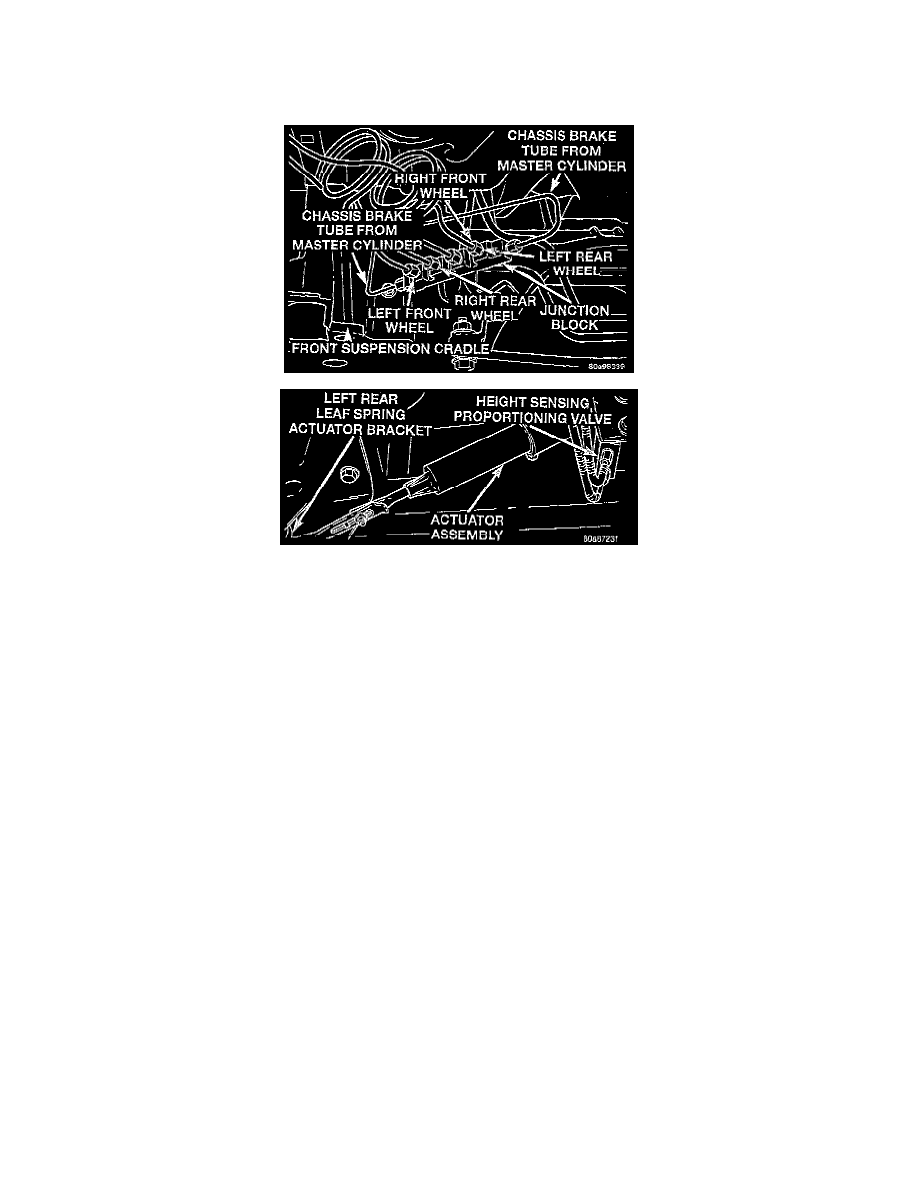Grand Caravan FWD L4-2.4L VIN B (1997)

Load Compensator: Description and Operation
WARNING: The use of after-market load leveling or load capacity increasing devices on this vehicle are prohibited. Using air shock absorbers
or helper springs on this vehicle will cause the height sensing proportioning valve to inappropriately reduce the hydraulic pressure to the rear
brakes. This inappropriate reduction in hydraulic pressure potentially could result in increased stopping distance of the vehicle.
Height Sensing Proportion Valve Operation
GENERAL INFORMATION
On vehicles not equipped with ABS brakes, the brake systems Hydraulic Control Unit (HCU) is replaced by a junction block. The junction block
is made of aluminum and is mounted to the front suspension crossmember on the drivers side of the vehicle in the same location as the HCU on an
ABS equipped vehicle. The junction block is permanently attached to its mounting bracket and must be replaced as an assembly with its mounting
bracket. The junction block is used for diagonally splitting the brakes hydraulic system. Vehicles not equipped with ABS brakes use a height
sensing proportioning valve. The height sensing proportioning valve is mounted on the left frame rail at the rear of the vehicle. The height sensing
proportioning valve uses an actuator assembly to attach the proportioning valve to the left rear spring for sensing changes in vehicle height.
PURPOSE
The height sensing proportioning valve regulates the hydraulic pressure to the rear brakes. The portioning valve regulates the pressure by sensing
the load condition of the vehicle through the movement of the proportioning valve actuator assembly. The actuator assembly is mounted between
the height sensing proportioning valve and the actuator bracket on the left rear leaf spring. As the rear height of the vehicle changes depending on
the load the vehicle is carrying the height change is transferred to the height sensing proportioning valve. This change in vehicle height is
transferred through the movement of the left rear leaf spring. As the position of the left rear leaf spring changes this movement is transfer through
the actuator bracket to the actuator assembly and then to the proportioning valve. Thus, the height sensing proportioning valve allows the brake
system to maintain the optimal front to rear brake balance regardless of the vehicle load condition. Under a light load condition, hydraulic pressure
to the rear brakes is minimized. As the load condition of the vehicle increases, so does the hydraulic pressure to the rear brakes.
OPERATION
The proportioning valve section of the valve operates by transmitting full input hydraulic pressure to the rear brakes up to a certain point, called
the split point. Beyond the split point the proportioning valve reduces the amount of hydraulic pressure to the rear brakes according to a certain
ratio. Thus, on light brake applications, approximately equal hydraulic pressure will be transmitted to the front and rear brakes. At heavier brake
applications, the hydraulic pressure transmitted to the rear brakes will be lower then the front brakes. This will prevent premature rear wheel
lock-up and skid. The height sensing section of the valve thus changes the split point of the proportioning valve, based on the rear suspension
height of the vehicle. When the height of the rear suspension is low, the proportioning valve interprets this as extra load and the split point of the
proportioning valve is raised to allow more rear braking. When the height of the rear suspension is high, the proportioning valve interprets this as a
lightly loaded vehicle and the split point of the proportioning valve is lowered and rear braking is reduced.
